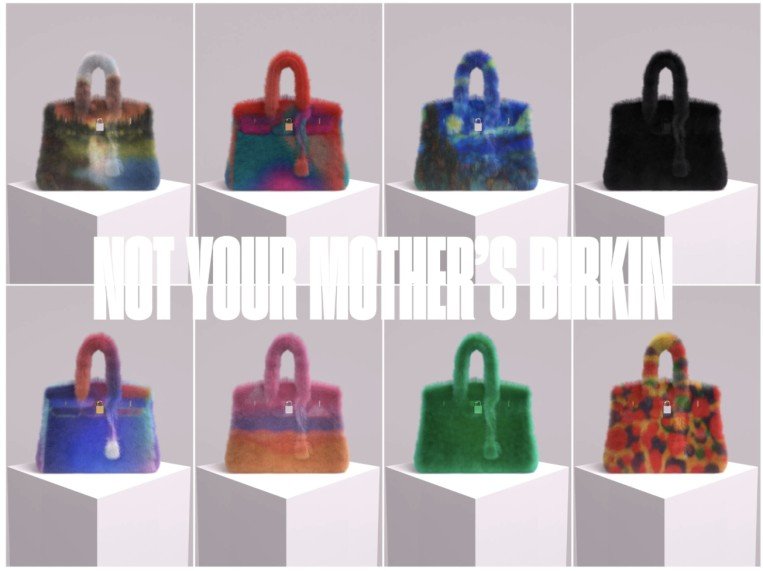The world’s fashion houses encroaching into metaverse territory does sound exciting. Yet, legal risks are always around the corner. According to Tran, recent disputes between brand owners and third parties raised concerns about these potential legal risks and the need for more established legal regulations.
“With the far-reaching innovations and evolution of many modern technologies, fashion companies are still on the run to fully expand their potential for virtual business while they anticipate more well-grounded regulations on how to best protect their IP rights and thrive in the virtual space,” said Tran.
Calboli said that the fashion community in Asia is certainly using these modern technologies in the fast fashion business to create fast-running microseasons. She noted that this causes the problem to become bigger because it accelerates the cycle even more.
“I think Asia is neither less prepared nor more prepared than the rest of the world. To some extent, no one is prepared yet, and we are seeing technology leaping ahead from legal protection, which perhaps is the correct trend now. Let it develop in full, see the actual problems it may create and then intervene,” said Calboli.
Tips for SMEs and startups
According to Calboli, IP is often a barrier for newcomers, and is mostly used by established businesses due to costs and lack of awareness by others.
Our interviewees recommend the following measures for SMEs and startups to safeguard their IP:
- Identify and register your IP in a timely manner.
Trademarks, copyrights, trade dress, industrial designs and patents are the key IP assets for every fashion company.
Registering the brand as a trademark is an important first step. If the business would like to use the trademark system to protect its product design, it should also market and promote its products extensively to establish the distinctiveness of its design.
“Also, startups and SMEs should understand that a simple design serving primarily a utility or a function cannot be protected as a copyrighted work. Therefore, only the design of a product that is considerably creative and distinguishable from its utility function would be copyrightable,” said Hsu.
She added that where appropriate, SMEs and startups may also register a design patent to protect their flagship product. “Protection afforded by a design patent may overcome the challenges raised under a copyright claim,” she said.
Conducting IP audits is also crucial because it helps rights owners to identify impediments and reduce risks.
- Use unfair competition laws and regulations.
Along with trademark and design, unfair competition is a less expensive right, according to Calboli.
- Apply technology in brand protection.
Technologies, such as labels and QR codes may be used to help consumers verify that the product they are buying is authentic.
- Form an association with other SMEs and startups.
An association will enable members to pool their resources together and to exchange information to better protect their IP.
- Enhance consumer awareness.
“Fashion brands should encourage consumers to change their choices and behaviours as well as reduce their demand for illicit goods. Consumer awareness campaigns aimed at increasing brand recognition and highlighting key harms attached to counterfeit goods can be effective,” said Tran.
Above all these, however, Calboli reminds startups and SMEs to prioritize product quality. “Quality products are the first and most important thing they have to create,” she said. “IP comes next, the product comes first.”
Fashion and IP: The next trends
More is yet to come for the trillion-dollar industry.
“Globally, we have observed certain trends that may result in a rise in IP rights protection, including trademark filings, in various new areas,” Tran revealed.
These “new areas” are the following:
Environmental responsibility and the closed-loop economy. “Brands tend to adopt trademarks to promote the sustainable nature of their products. Take for example Prada’s Re-Nylon line of bags that are made with recycled nylon, Louis Vuitton’s adoption of an Upcycling logo for products made from upcycled and bio-sourced materials and others,” said Tran.
NFTs for customer loyalty programs. The growing number of fashion establishments entering the metaverse has caused an uptick in the volume of NFTs for customer loyalty programs as well as a jump in demand for virtual clothing trademarks and brands.
Application of AI technologies to physical garments. Companies such as Amazon are moving a step beyond AI and digital apparel as they’ve begun applying AI technologies to design their physical garments. “In fact, we have already seen some semblance of AI designer programs as early as 2016, with Google’s Project Muze which used a produce design engine to generate designs based on inputs by fashion experts. This can greatly increase the output of designs, enhance company profits and bring a wider selection to consumers,” said Tham.
Clothing rentals in a new market. Clothing rental platforms like Hurr, My Wardrobe HQ, DressYouCan and others are booming, proof that such services are no longer merely associated with special occasions. Rather, rentals for shirts, blouses, pants, dresses, jackets, even maternity clothes and others are now in vogue.
Apart from these, Hsu said that AI, 3D scanning, AR, VR and other modern technologies may continue to meaningfully contribute to the industry in various ways. These include R&D initiatives for eco-friendly textiles, assessment of customer preferences and shaping of consumer purchases.
“The need to protect fashion designs via digital means is growing in importance along with the high demand for online shopping and the ease of copying designs.Consumer data protection will become increasingly important as the fashion industry collects and uses more data about consumers,” said Tran.
Also, cross-industry cooperation in the fashion industry may become more frequent because of the metaverse.
“IP protection for these new businesses – such as patent registration for a new technology and registration of a mark for NFT use – are thus likely to become trends in the near future,” said Hsu.
IP licensing for product designs could also be the next big thing in the metaverse.
Meanwhile, Calboli sees the big names in the fashion world increasingly fighting over designs and shape marks. She sees more mergers and acquisitions happening as well.
According to McKinsey, fashion enterprises allotted about 1.7 percent of their income for the use of emerging technologies in 2021. McKinsey expects these enterprises to increase this allocation to between 3 and 3.5 percent by 2030.
In any industry, trends are a constant. But, not all of these are passing fads. Some of these trends, including modern technologies that outpace our laws, lead to long-term business and industry evolution and growth. And with these come new challenges, including legal risks.
What is important for fashion companies is to identify these challenges and risks as soon as possible and then implement the necessary measures including those related to IP protection. After all, safeguarding of IP is not just a passing fad; it will always be in vogue.












